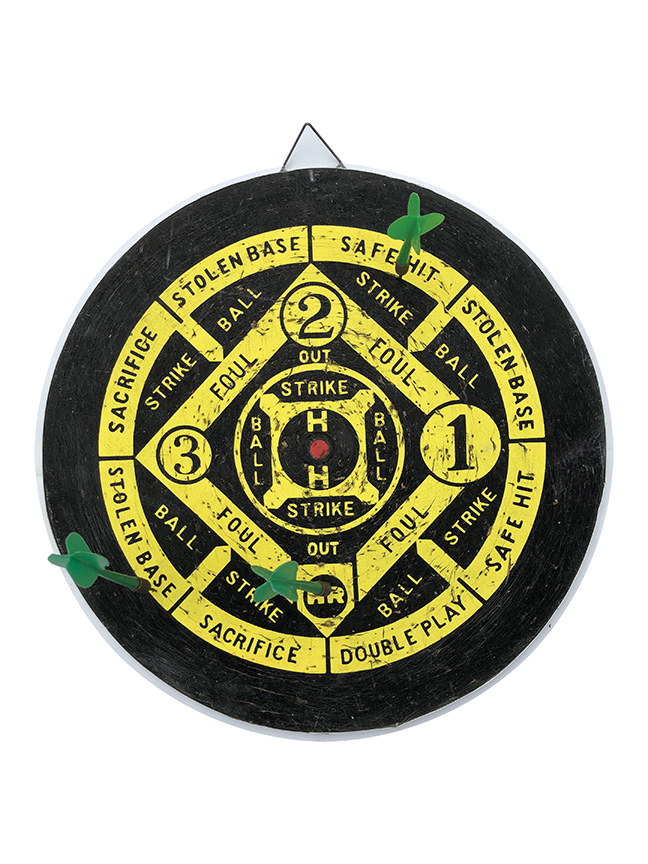
Dorri Partain
Contributor
Play baseball indoors, in any weather, with this special-designed dartboard.
Added to the reverse of a standard numbered-wheel design board, it offers players more variety than a one-sided board. While players can use the numbered wheel design to play a baseball-style game with darts, the baseball diamond design is more appealing to players, especially children.
Unlike a regular dart game, where the goal is to hit the red bullseye, the same hit on the baseball side would earn the shooter an automatic three outs. However, hitting the black ring outside the bullseye counts as an automatic hit.
To play with two players, each has five darts to score when their team is “up at bat” unless three outs occur first. Any dart that hits a non-designated area is considered a ball. Scoring follows the same rules as regulation baseball.
While considered mostly a novelty in America, the game of “dartball” is extremely popular in England. The board is designed as a diamond, with graphics that more closely resemble a baseball playing field. Dartball leagues began forming as early as 1928.
Dart-throwing games date to the medieval period, and may have been a variant of archery. The numbered-wheel design dates to 1896 and is attributed to Brain Gamlin, an English carpenter who may have fabricated dartboards to sell at local fairs. Divided into 20 segments, the random numbering system promoted accuracy in throwing, as only a fraction separated a score of 20 from a score of 1. Gamlin died in 1903 and never had the design patented.
The undated board shown above is clearly an American design devised to give dartboards more versatility. Other games that appeared on the flip side included golf, bowling, and poker.
















